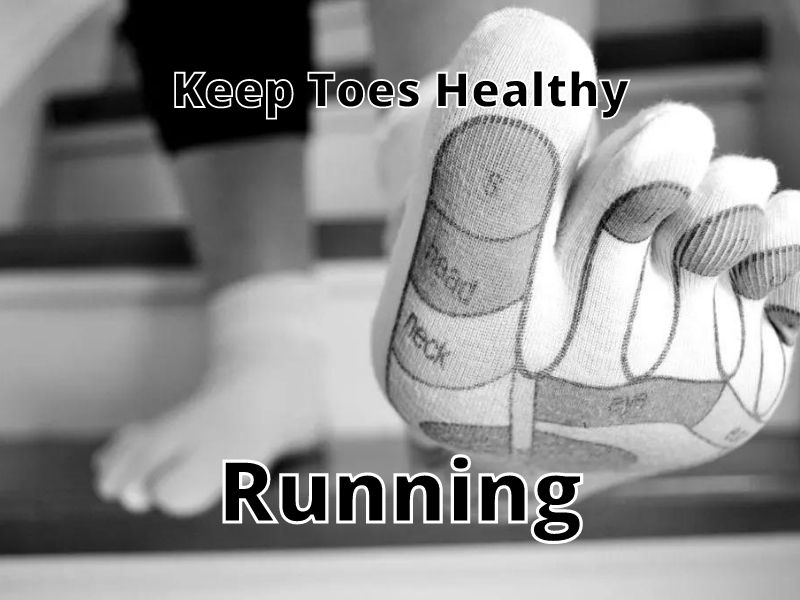I tend not to think about my toes much at all until they start hurting. Unlike our hands, our toes tend to be much less utilized and sometimes get abused and mistreated by the habits we have developed when wearing shoes and when running.
To keep your toes healthy when running you may need to take time to prepare them with tape, powder, lubrication, proper socks, and provide them with exercises for overall foot health. Remember that the longer you run, the better prepared you’ll need to be.
I have brought the wrong types of shoes in the past and have hurt my toes because my toe box was too cramped. I have also worn the wrong type of socks, which lead to rubbing and blisters on my toes. The best experiences have been when I had the most preparation time to make sure I cover all the items I needed to make my running a good experience.
Conditioning Your Toes
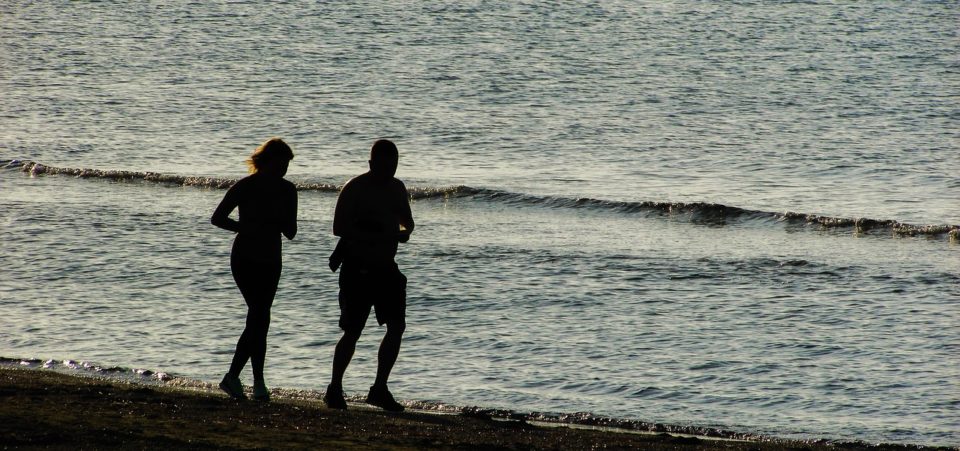
The toes are important for runners because they aid in your overall running ability. They help control your push off before your foot leaves the ground and are more effective, the stronger they become. As toes become stronger, it’s likely that your arch will also gain strength and your landing and take-off will running will be better managed.
You can try some toe exercises (article) to improve your toe’s health and overall foot strength so that you will be able to handle the beating your feet will receive on longer runs. Preparation is probably the one best thing you can do to help your toes get ready for running.
Consider running longer and longer distances over the course of months rather than weeks to prepare for a long run. You’ll have less risk of injury and likely build more foot strength.
Preparation Your Toes Before Your Run
If your planning on running long distance, you may need to prepare your feet and toes first. Likely you’ll already be aware of most of the issues that occur when you run long distances because you’ve already run in your current shoes for a while.
You may not be used to running a marathon and this is where you’ll need preparation. Whenever you change shoes and sometimes your socks, you will experience some adjustments. Make sure you don’t change your shoes or socks right before a long-distance run or you may cause problems with rubbing, as well as other issues.
As you prepare for your long-distance run, race, or marathon consider what issues you’ve seen in the past. Do your toes rub at certain places? Is your foot sliding a bit? Are there any contact points where your shoe may be a bit tight?
All of these issues will be applicable when running longer. You’ll need to add some moleskin, runners tape, or perhaps some thinner or thicker socks.
For a runner who is running their first 5K and has had little to no practice running, getting a well-fitting shoe is important. Make sure to go to a running shoe store if you’re unsure about how your shoe should fit.
Here are some things to consider when buying new running shoes:
- Your toes should be free to move without contact with the front of the shoe.
- Your foot should feel snug but not overly tight.
- Getting a good running sock will help reduce moisture and help prevent rubbing.
- Remeasure your foot. Your foot may have changed a bit since the last time you measured.
- Wear them as much as possible before the race or run. You can start to get use to them and figure out if there will be any major problems.
- Tie your shoe laces correctly. They should be fairly tight on the first one or two eyelets and snug but not tight over your arch area or the remaining eyelets. Tie a double knot if needed to prevent your laces from loosening while running.
- Some runner use chaffing lubricant on their toes to prevent skin rubbing.
- To keep your feet dry, you can use a foot powder to aid in the prevention of rubbing.
- It may work for some to use two pairs of socks. This helps prevent rubbing and may wick moisture better, although your shoes may be too tight if the socks are too thick.
- Moisturize or use an ointment to keep skin soft and less likely to chafe.
Intervention During Your Run
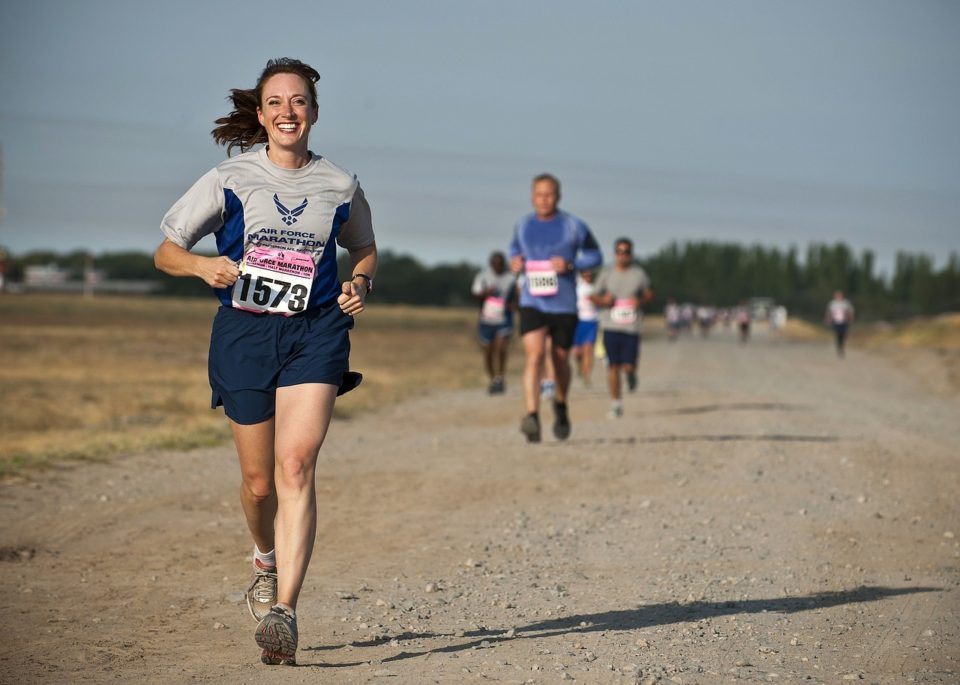
As you are running you may start to have discomfort if your toes rub against each other or against your shoes. This is where experience with running longer distances and with your shoes will come in handy. You will have previous experience to know what to expect and how to prepare.
But we don’t always have the foreknowledge of what will happen during our running event. What should we do to be prepared?
Here are some things you can do to intervene when you run into issues.
- Bring a pair of extra socks. You can change your socks if the pair your wearing gets wet or malfunctions.
- Bring extra tape or mole skin to use when rubbing occurs in places you didn’t expect.
- Bring a bit of extra chaffing lubrication to apply if needed.
- Drink plenty of water during the run to stay hydrated. Perspiration will prevent salt from accumulating on the skin, which can cause chaffing.
- Recheck your shoe laces. If they are loose, take the time to retie them well so your feet don’t have the opportunity to move around too much in your shoe.
Toe Care After Your Run
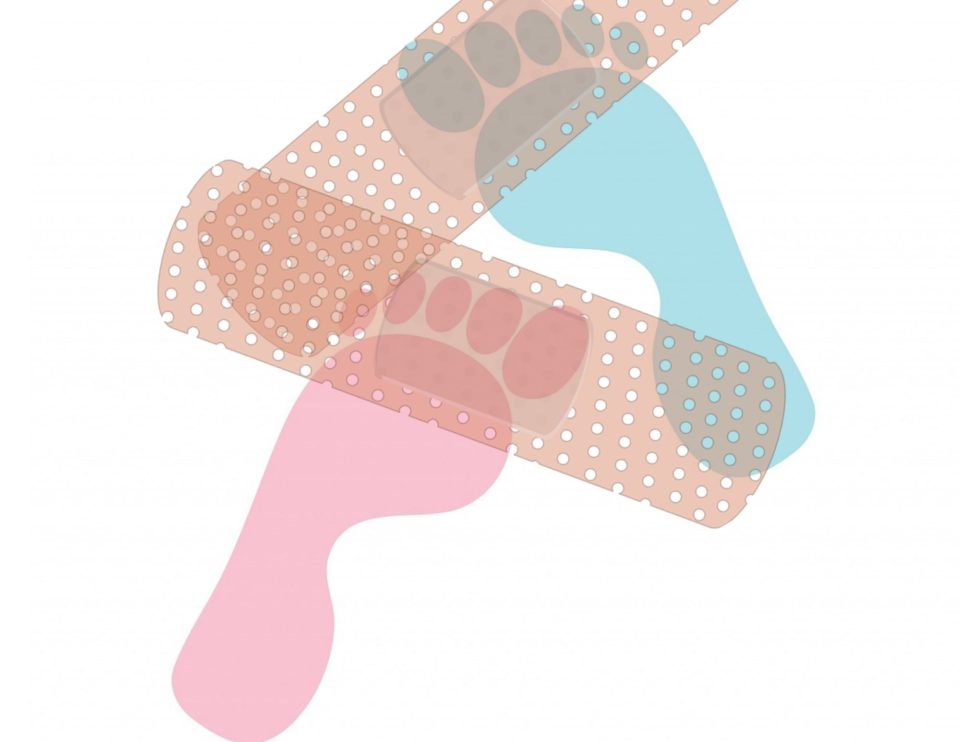
If your best efforts still leave you with sore toes after your run, there are several things to do to recover and get your toes back in good condition.
Giving yourself time to heal and recover is just as important as exercise. We might want to reach our goal in the time limits we’ve set, but if we are causing injury to ourselves, it’s not worth it.
Here are some things to consider after you are done with your run that can aid in recovery.
- Blisters: Blister can open, so caution needs to be used so infection isn’t caused. If it’s minor, a bandage may be all that you need. If its painful you may need to drain it. Check here for more information (Mayoclinic.org)
- Raw Skin: When some of my skin has rubbed off, I treat it like a cut and wash my hands and treat the area with iodine or alcohol. Then I apply some antibacterial ointment and a bandage.
- Damaged nails: Consider what damage has occurred and use nail clippers to remove any section of the nail that is hanging or loose. Clean the area. Use a bandage to cover sensitive skin. If the skin is open clean and apply antibacterial ointment and a bandage.
- Cuts: Wash your hands and treat the area with iodine or alcohol. Then apply some antibacterial ointment and a bandage.
- Soreness: Resting your feet for the recommended time (up to two weeks if necessary) after the run will help sore muscles recover. Getting a massage can also help feet with some soreness, but wait a few days if having just run a marathon.
- Dry Skin and Cracks: Using a good moisturizing cream or ointment can prevent skin from opening and help restore moisture.
- Injury: See a doctor when injuries occur. We sometimes miss something that an X-ray or examine can find.
Ignoring Toes Problems
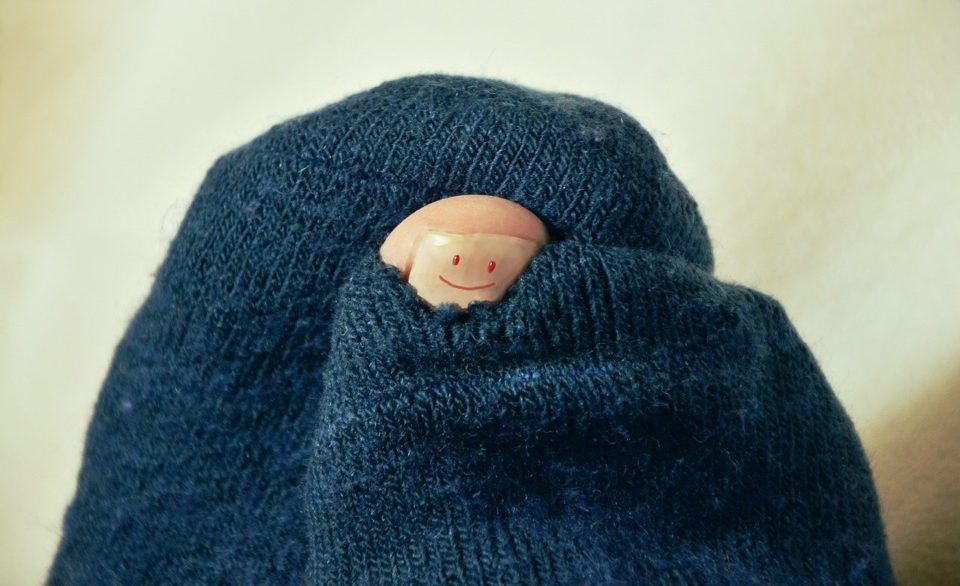
During a run, it can sometimes be easy to ignore problems that come up and focus on running the race. You might convince yourself that everything will be fine or you’ll deal with it later or after the race. Sometimes ignoring might end up resulting in minor problems.
But, ignoring pain or issue that come up with your feet and toes can result in more serious issues later. Take the example of the runner who ignores their loose shoelaces. Over time their foot starts sliding just a bit, but enough to cause serious chaffing or blister by the end of the race.
It’s best to address an issue that comes up as soon as possible to avoid skin damage or other injuries to your feet and toes. To give yourself time to prepare mentally, you can decide where in the next 5 minutes is a good place to stop.
You can take care of the issue and mentally reassure yourself that you’re actually helping your performance with caring for your feet and toes. Once your back on the road you’ll feel like you can reset and be more determined to run your race with a positive mindset about your feet and toes.
Conclusion
If you take your time to prepare before a run and are prepared during a run, you’ll have a greater chance of having few to no problems during your run. Longer runs will create more opportunities for issues to come up, so being prepared can have a great impact on your toe health.
As you recover after a long run, take time to recover before so more issues don’t occur from over-taxing your feet and toes. Self-care and seeing a doctor if needed will ensure you can run again with a greater chance of having a healthy and positive experience.
Thanks for visiting Helpshoe.com
Additional Questions
How long should I wait if my foot is injured before I run again?
Recovery is very important before running again. Injuries start to multiply when runners don’t take time to heal and recover. Sore muscles may be normal, but running with tight muscles could cause many issues. Wait until muscles are mostly not sore and are loose, and bones, tendons, and ligaments are fully healed.
How can I fix my crooked toes?
Seeing a physical therapist can help you get specific exercises to meet your misaligned toe needs. Some people suggest surgery to correct problems, but that may not be the best solution. Exercises and lots of work can help some toe problems, so always look for options that are the least invasive is my opinion.

